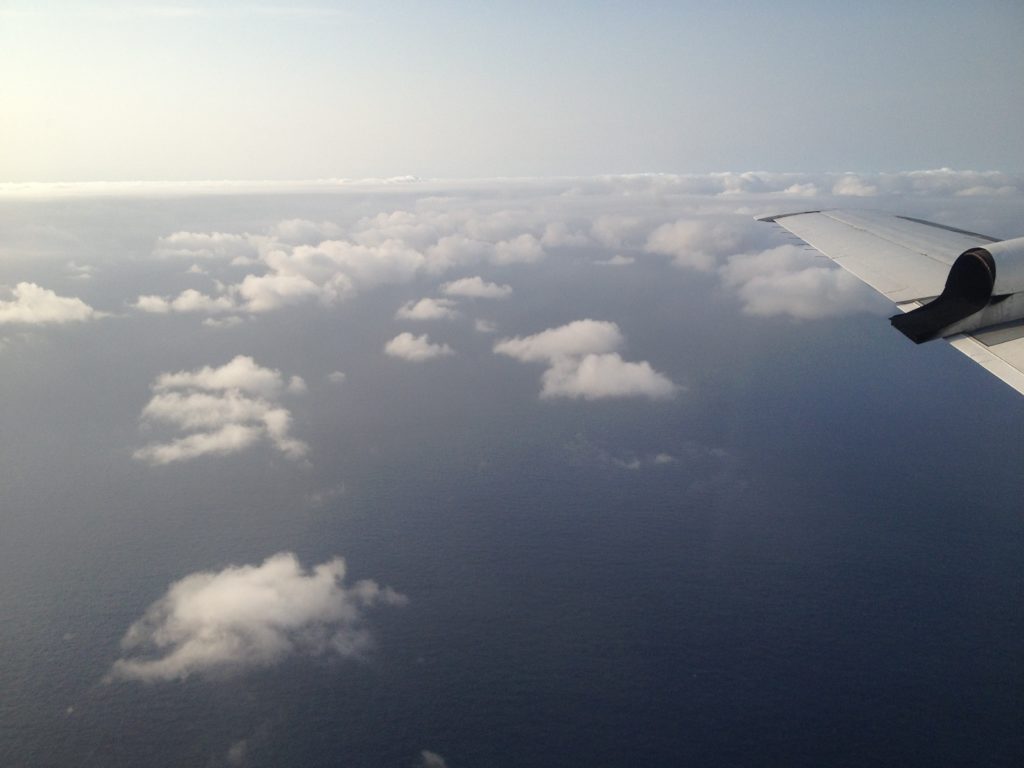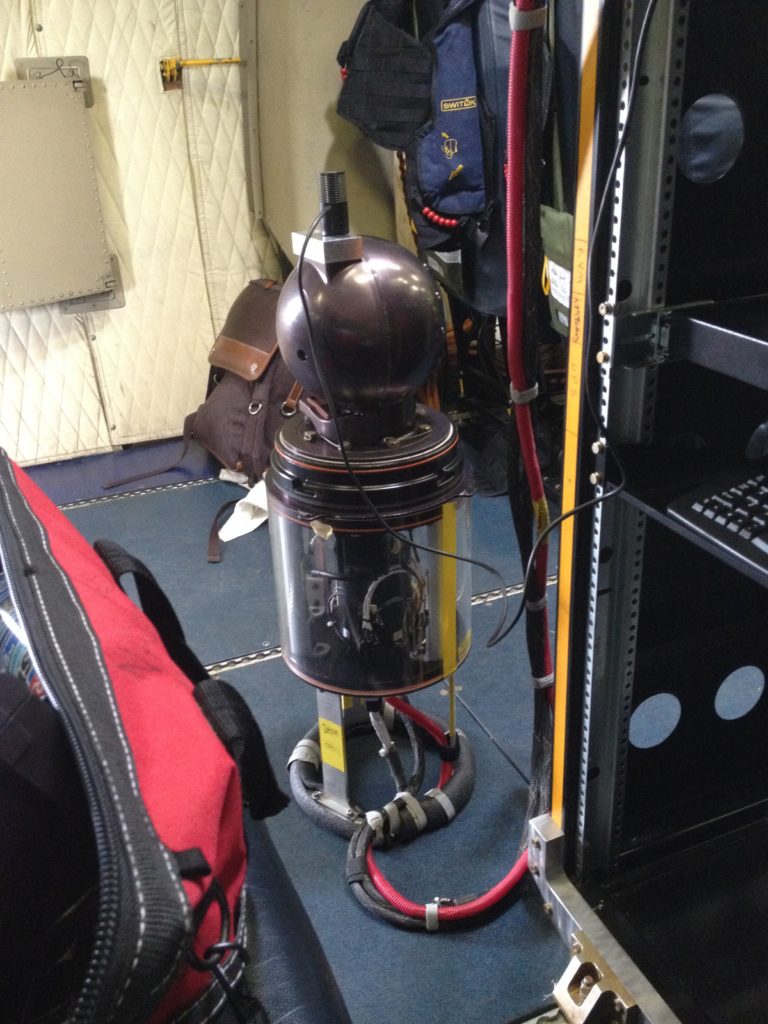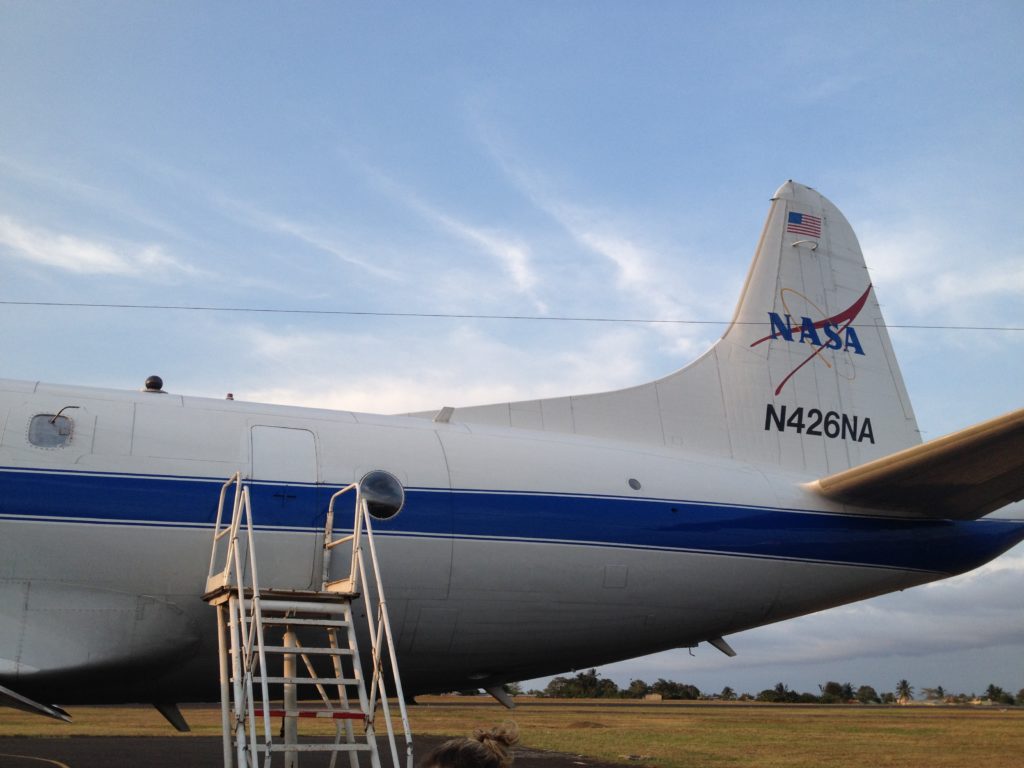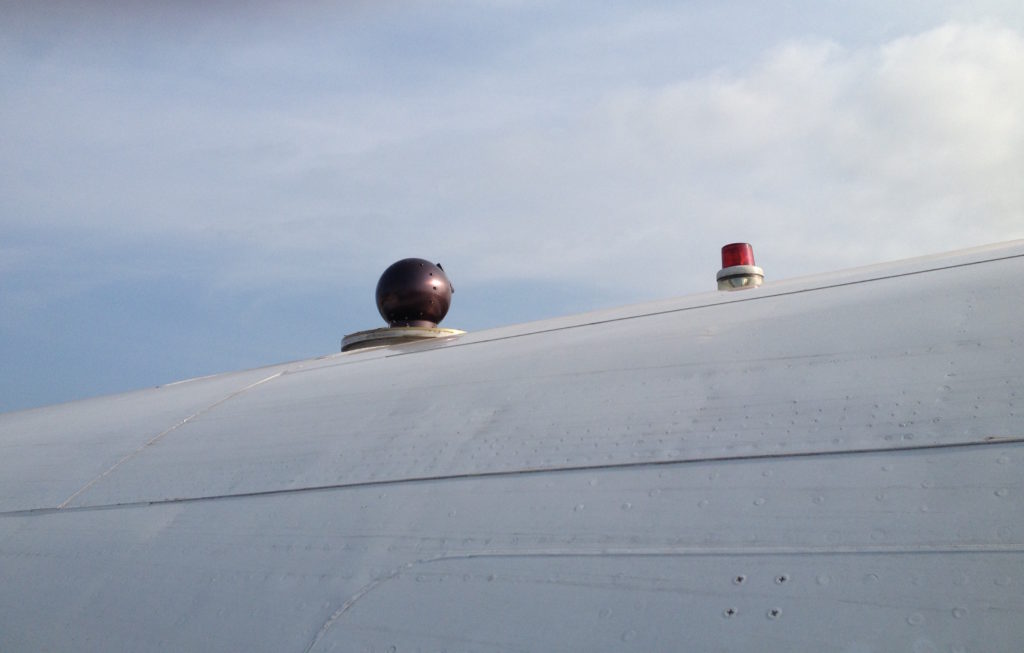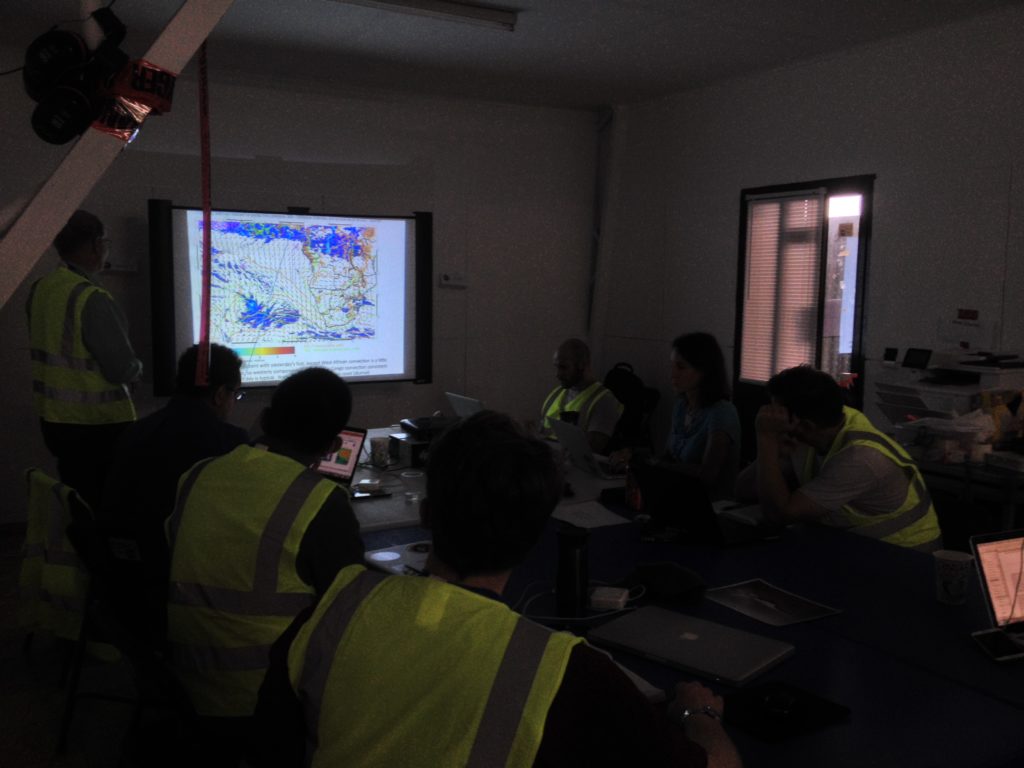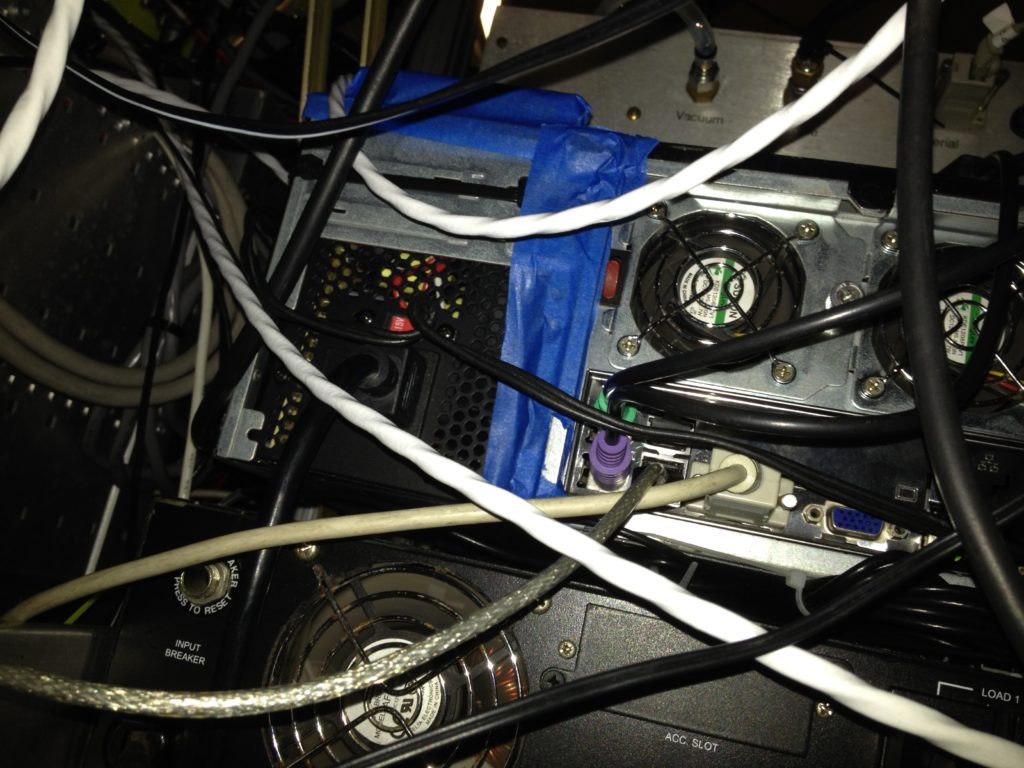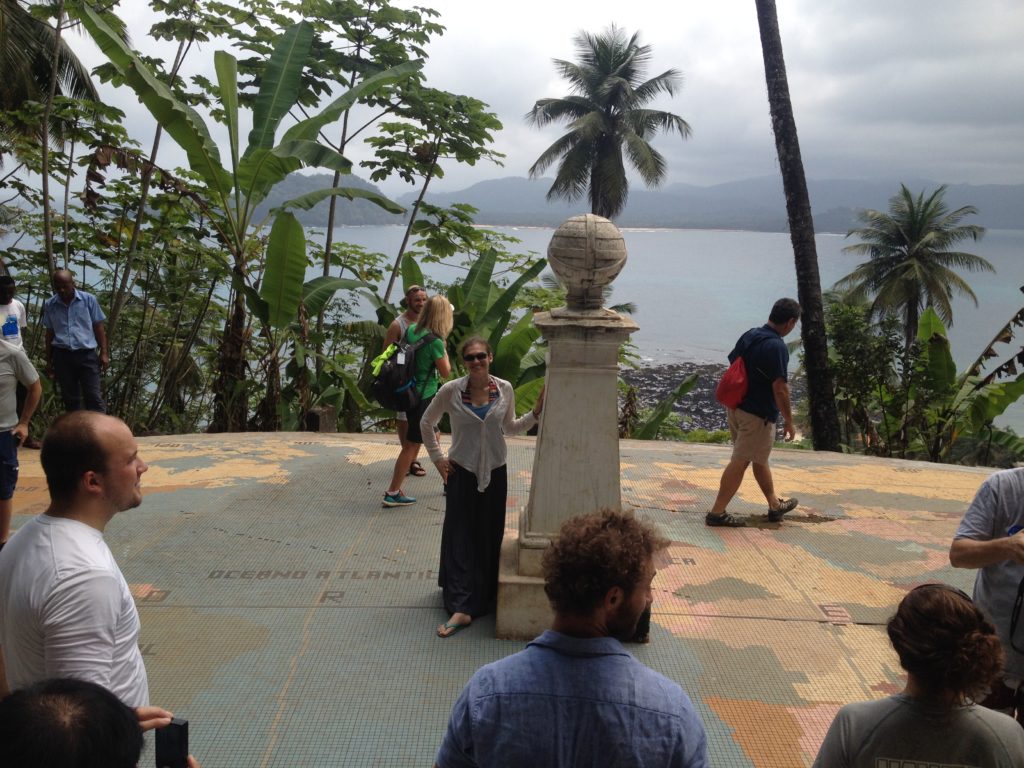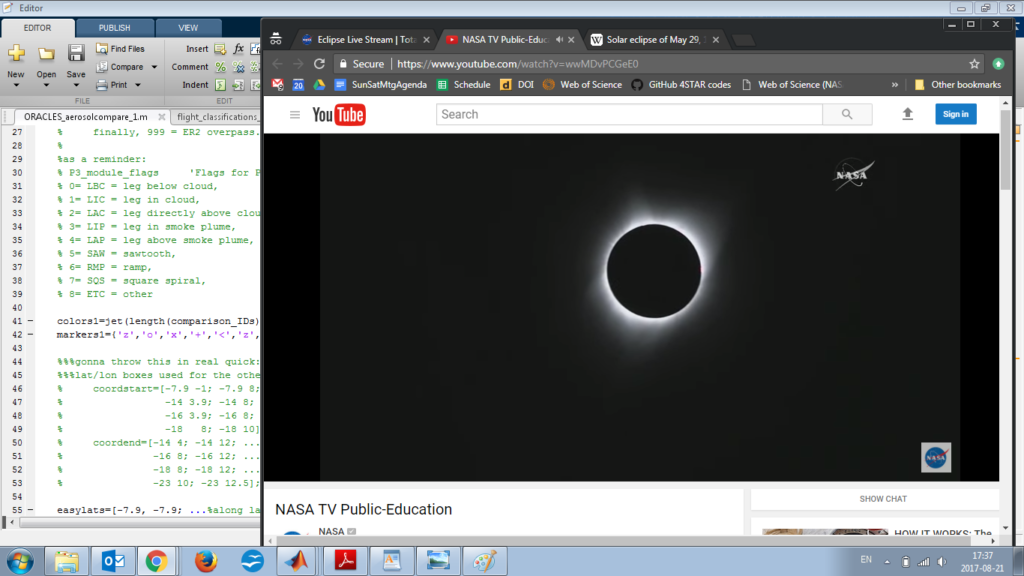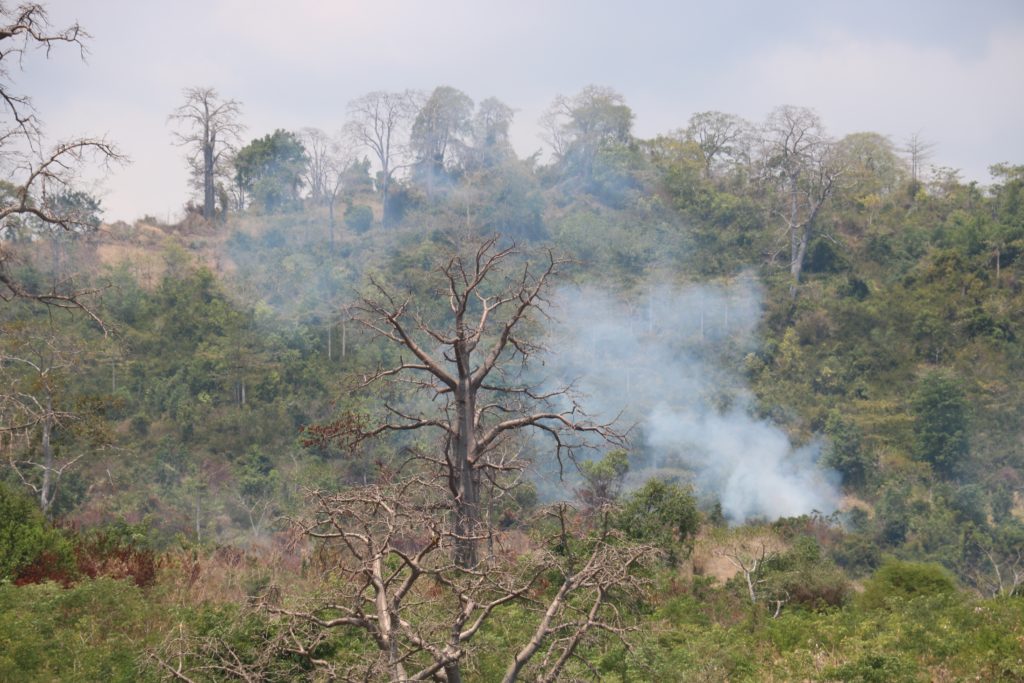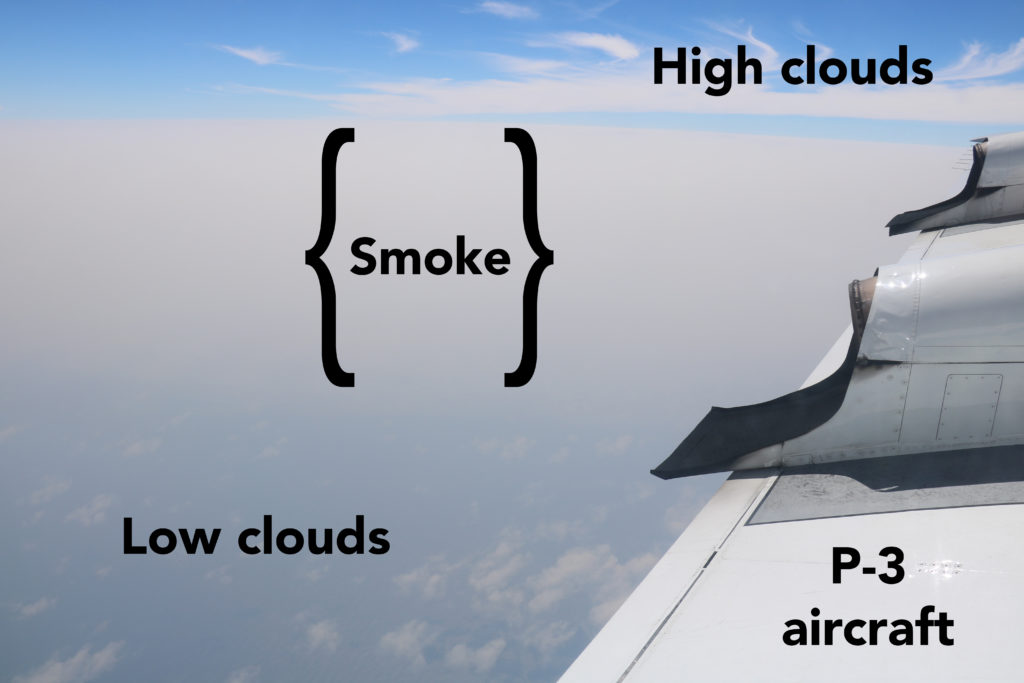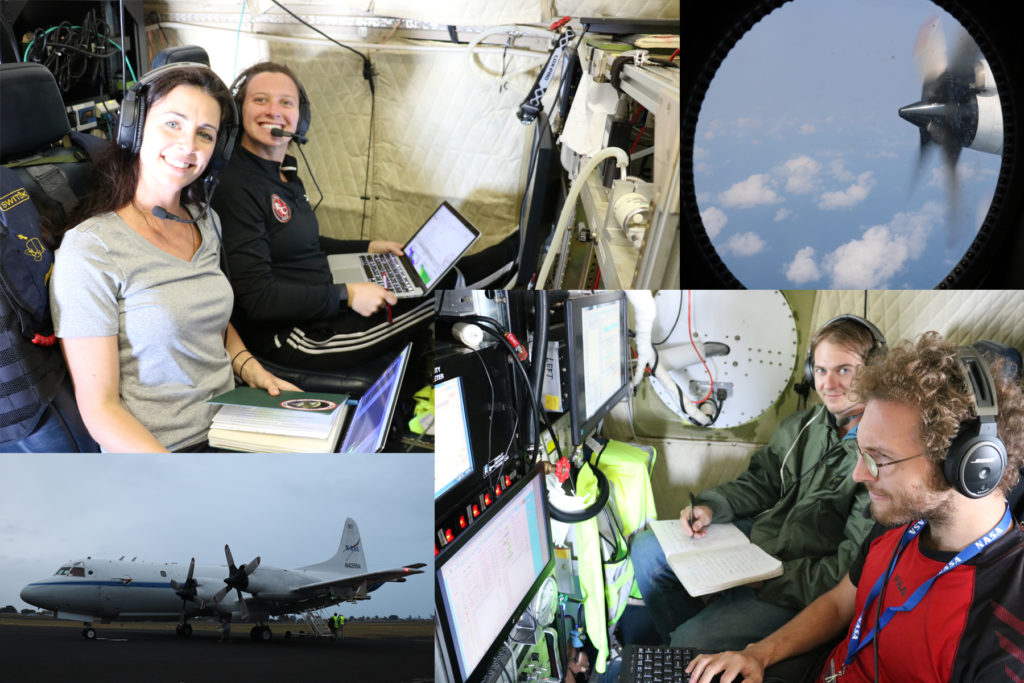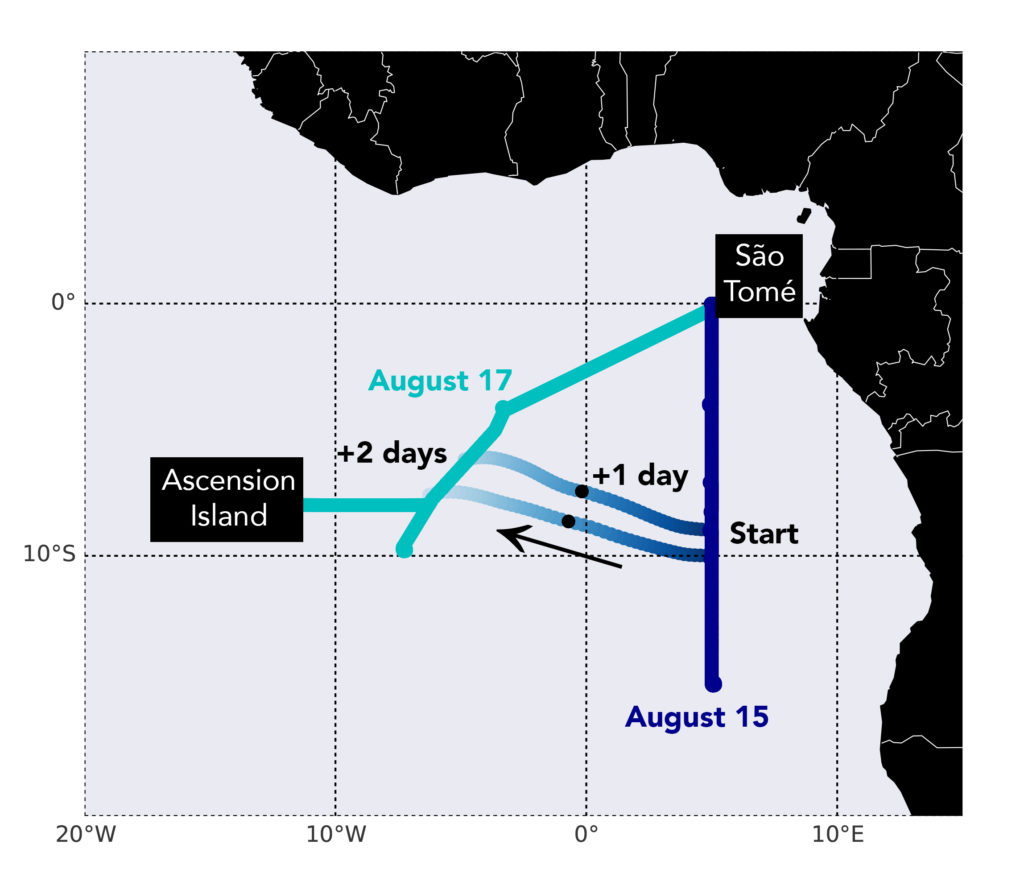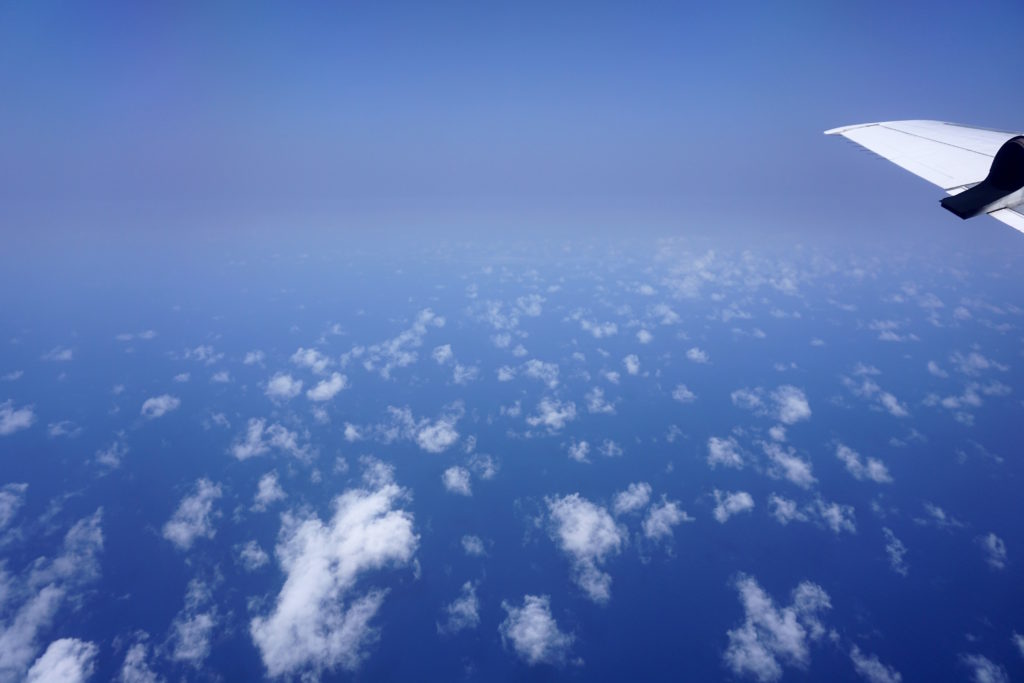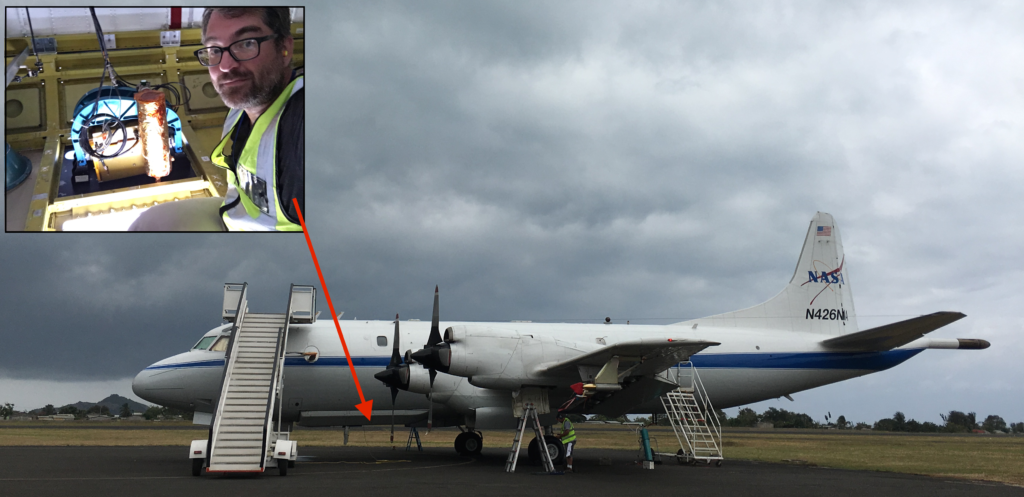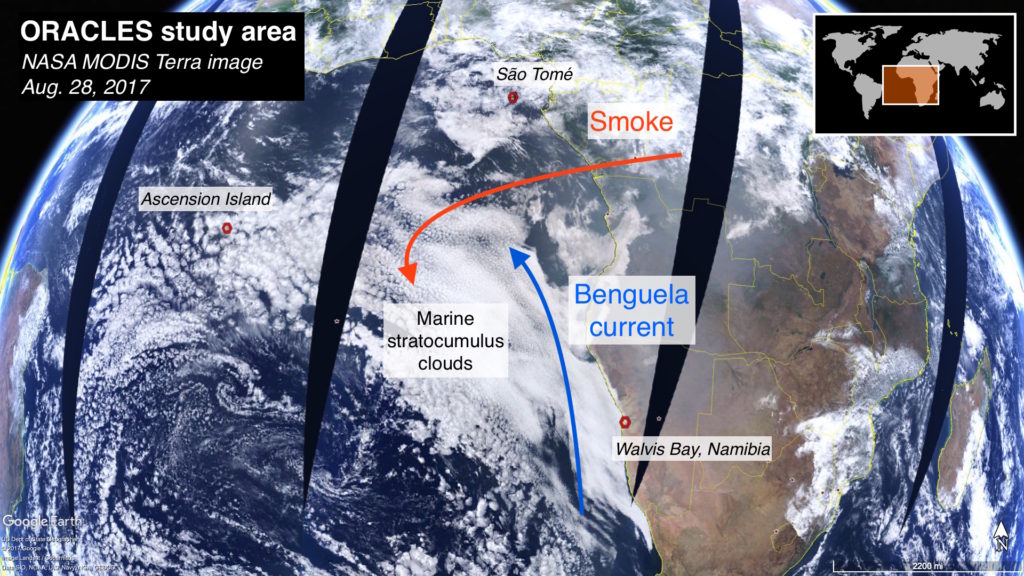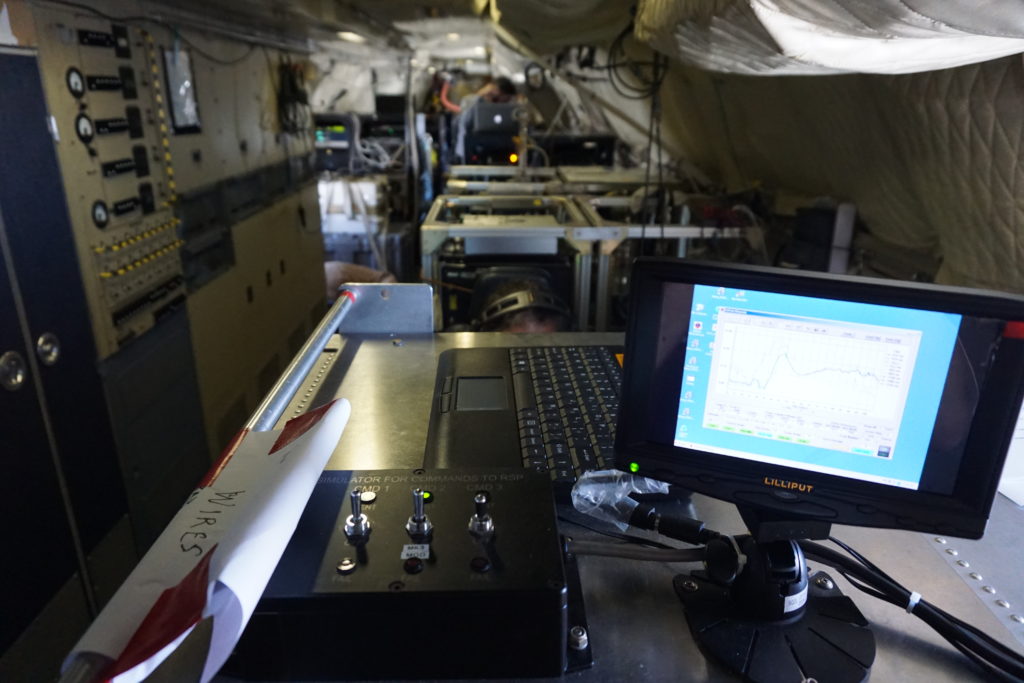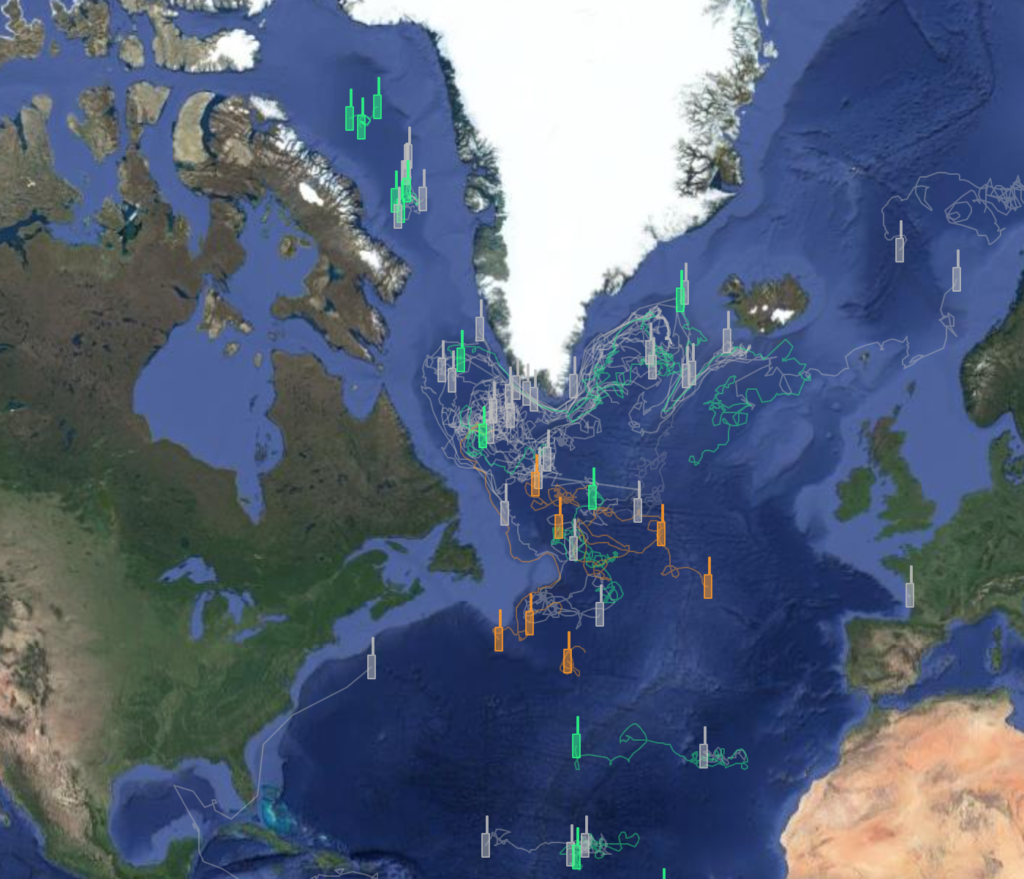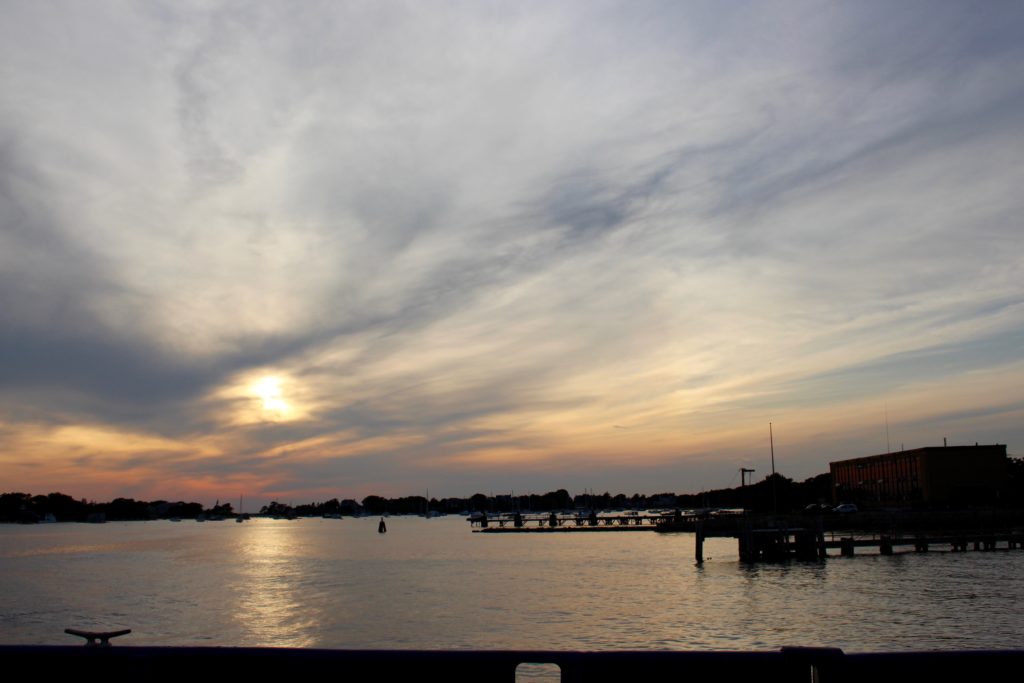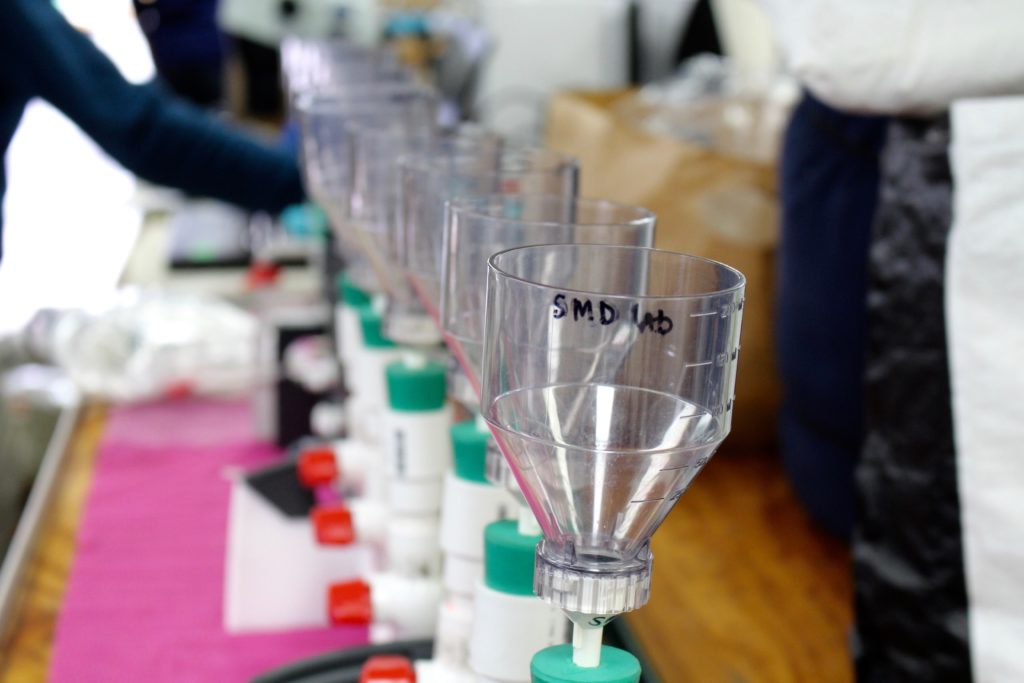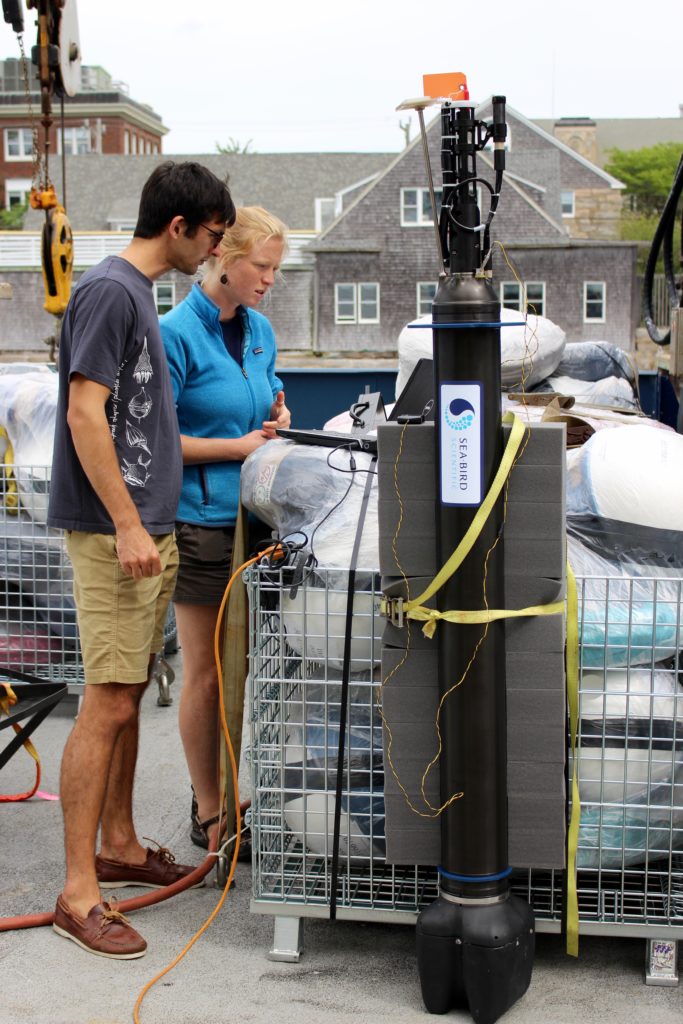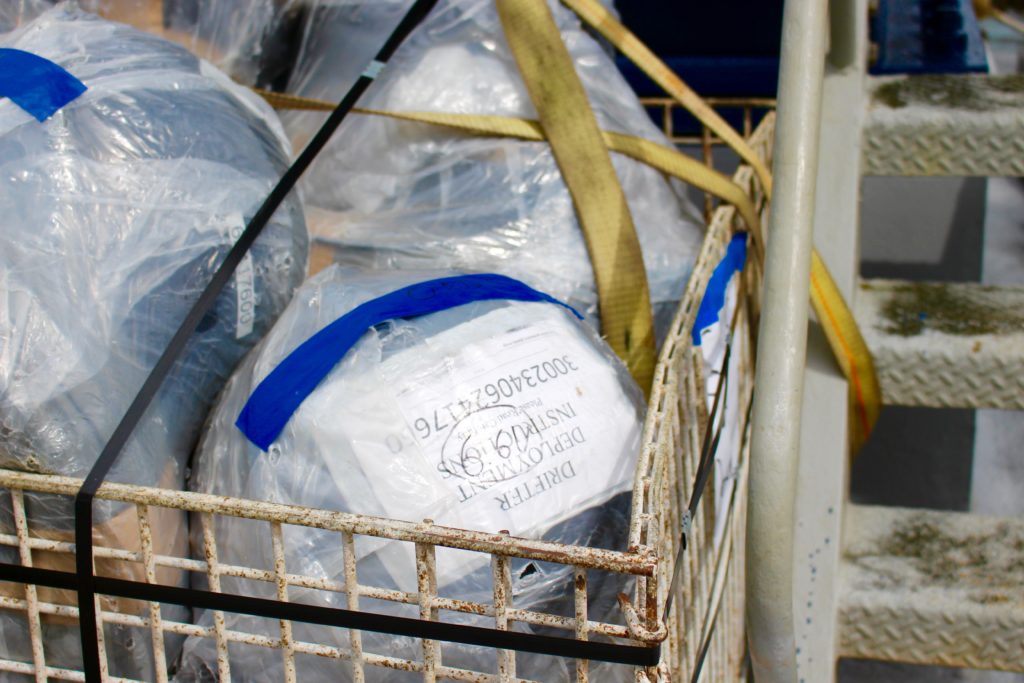by Joaquín E. Chaves-Cedeño / South Pacific Ocean /
It doesn’t take a lot of technology to see that the ocean is blue. And when it comes to the blueness of the ocean, it doesn’t get much more blue than where I am. My current home and office is the research vessel Nathaniel B. Palmer—the largest icebreaker that supports the United States Antarctic Program—which is on an oceanographic expedition across the South Pacific Ocean. On this voyage, however, the Palmer hasn’t broken any ice.
Our Global Ocean Ship-based Hydrographic Investigations Program (GO-SHIP) P06 campaign departed Sydney, Australia, on July 3, and successfully ended the first leg of this journey on August 16 in Papeete, French Polynesia, also known as Tahiti. This is where our team from NASA Goddard Space Flight Center (Scott Freeman, Michael Novak, and I) joined dozens of other scientists, graduate students, marine technicians, officers and crew members for the second and final leg that will end in the port of Valparaiso, Chile, on September 30.
The GO-SHIP program is part of the long history of international programs that have criss-crossed the major ocean basins, gathering fundamental hydrographic data that support our ever growing understanding of the global ocean and its role in regulating Earth’s climate, and of the physical and chemical processes that determine the distribution and abundance of marine life. This latter topic regarding the ecology of the ocean is what brings our Goddard team along for the ride.
The P06 ship track, for the most part, follows along 32.5° of latitude south. That route places our course just south of the center of the South Pacific Gyre—the largest of the five major oceanic gyres, which form part the global system of ocean circulation. The Gyre, on average, holds the clearest, bluest ocean waters of any other ocean basin. This blueness is the macroscopic expression of its dearth of ocean life. We have seen nary a fish or other ship since we departed Tahiti (as this is not a major shipping route). Oceanic gyres are often called the deserts of the sea. On land, desert landscapes are limited in their capacity to support life by the availability of water. Here, lack of water is not the issue. Water, however, is at least the co-conspirator in keeping life from flourishing. Physics, as it turns out, is what holds the key to this barren waterscape.
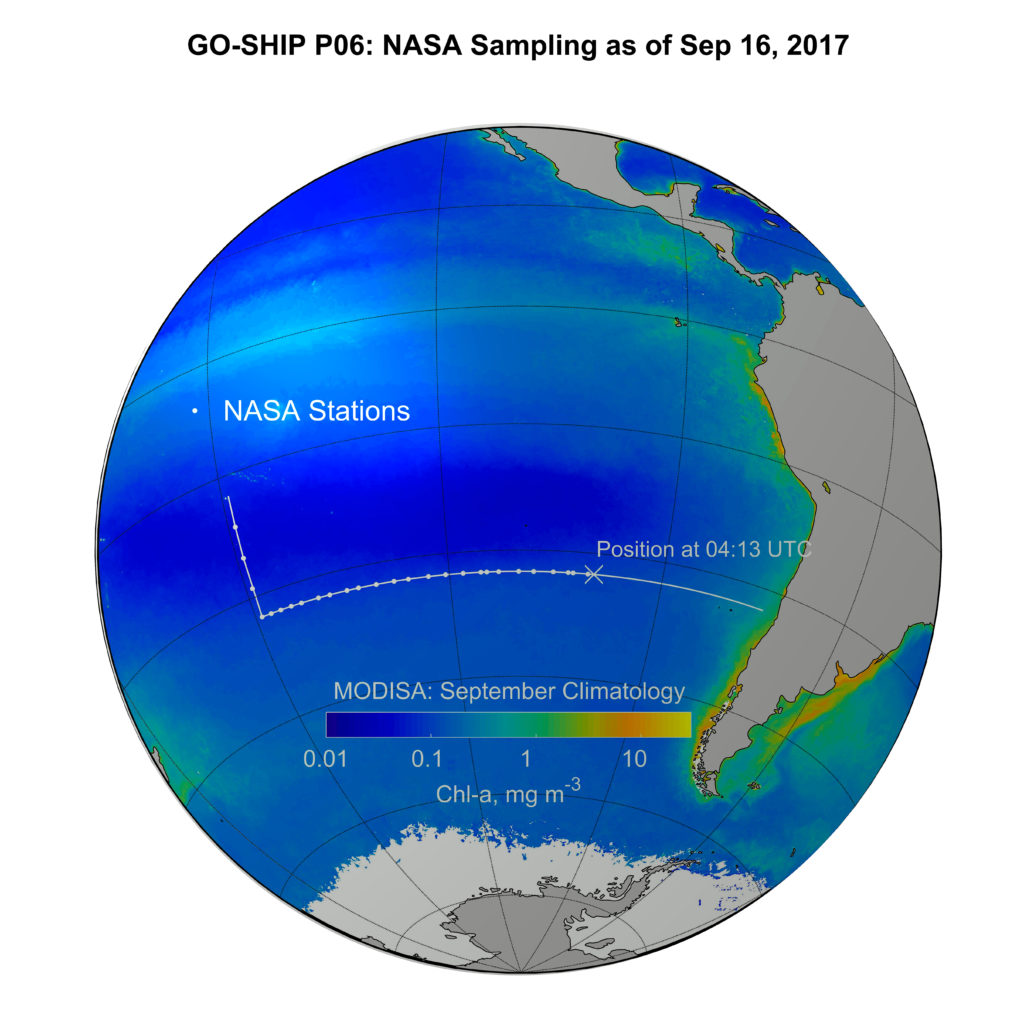
Due to the physics of fluids on a rotating sphere such as our planet, the upper ocean currents slowly rotate counterclockwise around the edges of the center of the Gyre—as a proper Southern Hemisphere gyre should—and a fraction of that flow is deflected inward, toward its center. With water flowing toward the center from all directions, literally piling up and bulging the surface of the ocean, albeit, by just a few centimeters across thousands of miles, gravity pushes down on this pile of water.
This relentless downward push puts a lock on life.
The pioneers of life in the ocean, tiny microscopic organisms known as phytoplankton, drift in the currents and grow on a steady mineral diet of carbon dioxide, nitrogen, and phosphorus, along with a dash of iron. (Meanwhile, they expel oxygen gas as a by-product, to the great benefit of life on Earth). Phytoplankton obtain most of their sustenance from the ocean below. What happens in this Southern Hemisphere gyre is that layers of denser water trap the nitrogen- and phosphorus-rich water to depths that are out of reach to most of the phytoplankton. And phytoplankton that do make it to that depth are too starved of sunlight to spark the engine of photosynthesis that allows them to grow.
Why are we here and where does NASA come into this story? Since the late 1970s, NASA has pursued, experimentally at first, and now as a sustained program, measuring the color of the oceans from Earth-orbiting satellites as a means to quantify the abundance of microscopic life. It’s microbiology from space, in a way. Formally, though, we call it “ocean color remote sensing.” Bound to polar orbits that allow them to scan the entire surface of the globe every couple of days, satellites whiz by at several hundred miles above the atmosphere carrying meticulously engineered spectra-radiometers, or cameras capable of measuring the quantity and quality, or color, of the light that reaches its sensors. This is where our work aboard the R/V Palmer comes into the story.
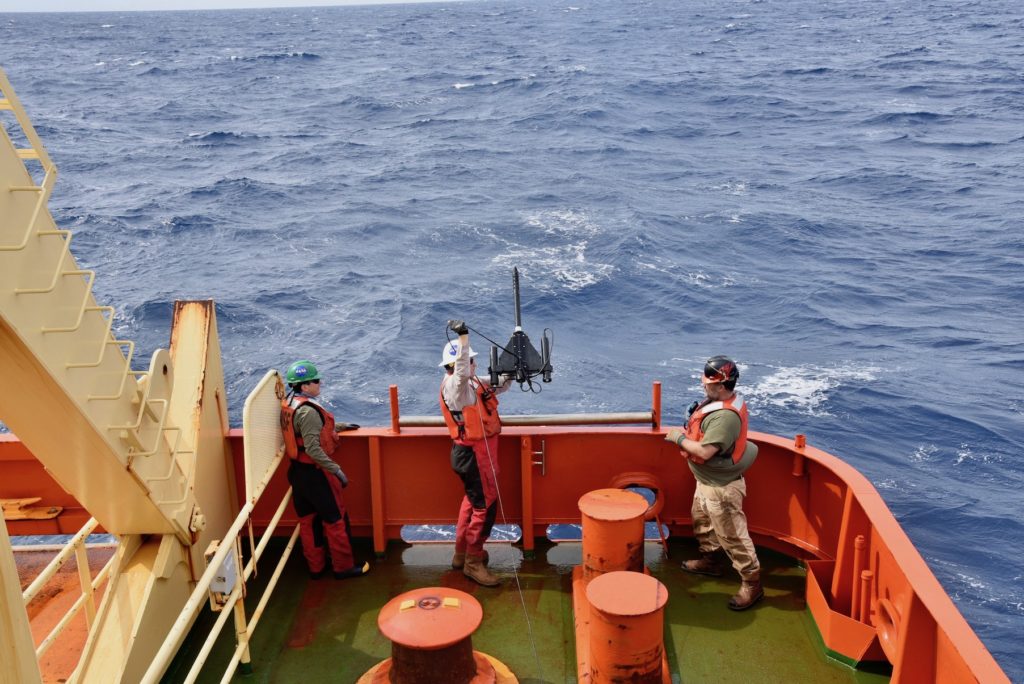
The data the satellites beam down from orbit do not directly measure how much plant life there is in the ocean. Satellite instruments give us digital signals that relate to the amount of light that reaches their sensors. It is up to us to translate, or calibrate, those signals into meaningful and accurate measurements of microscopic life, along with temperature, salinity, sediment load, sea level height, wind and sea surface roughness, or any other of the many environmental and geophysical variables satellite sensors can help us detect at the surface of the ocean. To properly calibrate a satellite sensor and validate its data products, we must obtain field measurements of the highest possible quality. That is what our team from NASA Goddard is here to do.
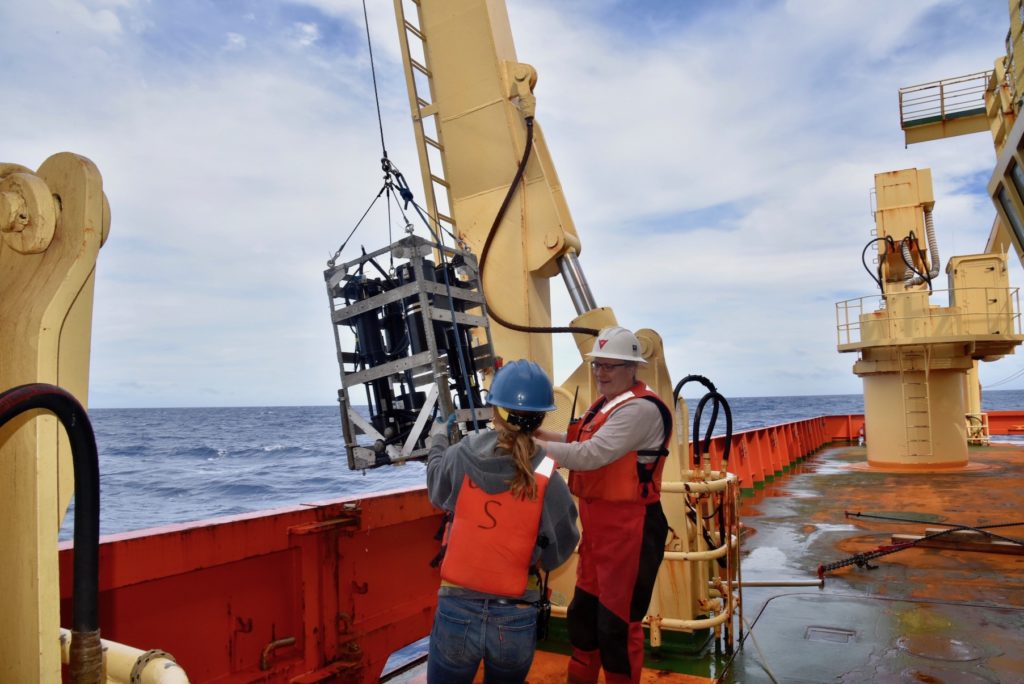
Around midday, typically the time an ocean color satellite is flying over our location, we perform our measurements and collect samples. We measure the optical properties of the water with our instruments to compare what we see from the R/V Palmer to what the satellites measure from their orbit. At the same time that we perform our battery of optical measurements, we also collect phytoplankton samples to estimate their abundance and species composition as well as the concentration of chlorophyll-a, the green pigment common to most photosynthesizing organisms, such as plants. By simultaneously collecting these two types of measurements—light and microscopic plant abundance—we are able to build the mathematical relationships that make the validation of satellite data products possible.
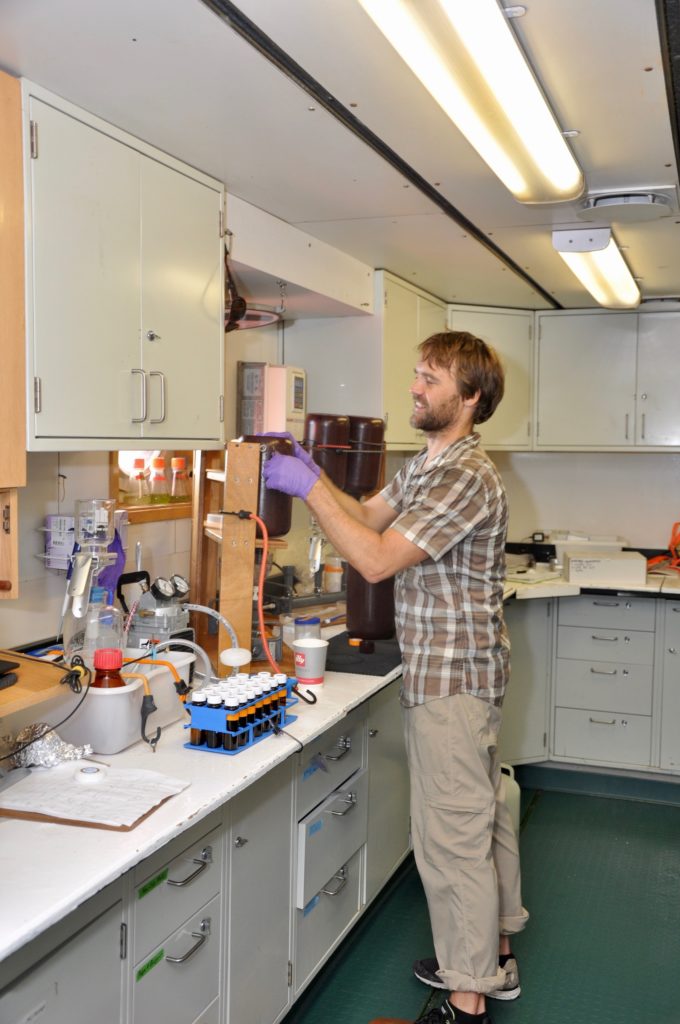
Credit: NASA/Joaquin Chavez
The waters of the South Pacific Gyre are an ideal location for gathering validation quality data, perhaps one of the most desirable, because there are few complicating factors and sources of uncertainty that blur the connection we want to establish between the color of the water and phytoplankton life abundance. Our measurements will extend NASA’s ocean chlorophyll-a dataset to some of the lowest such values on Earth. The water here is blue; in fact, it’s the bluest ocean water on Earth.

